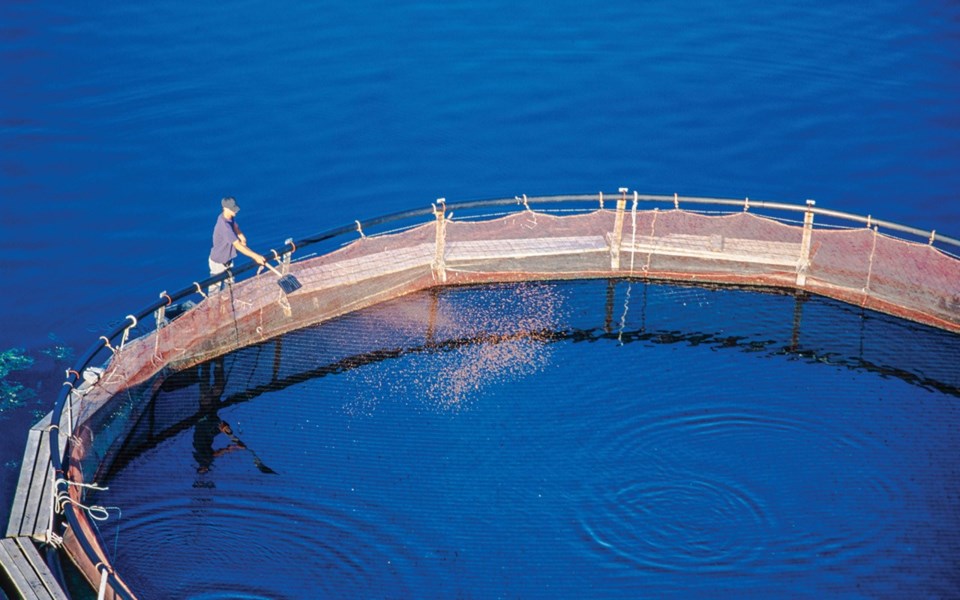For the second time in her more than 30-year career, marine biologist Alexandra Morton has scored a legal victory in the name of protecting wild salmon.
Normally, that would be cause for celebration, but Morton has ample reason to be sceptical of the government's willingness to follow through.
On Feb. 4, a federal court struck down a Fisheries and Oceans Canada's (DFO) policy on piscine orthoreovirus (PRV), a virus that is highly prevalent among fish farms off the coast of B.C. and one that scientists believe poses a serious threat to our already dwindling wild salmon stock. Specifically, Justice Cecily Strickland ruled that the DFO's current non-testing policy for the highly contagious pathogen at fish farms—many of which, in B.C., sit along wild salmon migration routes—contravenes Canada's Fishery General Regulations. She gave the DFO four months to reverse its testing policy.
"It's a good decision but we really do need the (fisheries) minister to actually listen to the decision and take some action," said Stan Proboszcz, biologist and science advisor for the Watershed Watch Salmon Society.
A 2015 court decision reached a similar conclusion, ruling that the DFO should be upholding the law—which, according to Morton, largely fell on deaf ears.
"It's against the law not to test for (PRV)," she said. "This is the second case I've won on this. In the first case, four fisheries ministers ignored the ruling and, honestly, I did not know it was possible that our ministers could pick and choose which laws of Canada they're going to follow.
"Our democracy is as threatened as our wild salmon."
Morton's scepticism stems from the DFO's response since the ruling was announced. Just days following the decision, the DFO released a technical briefing on the results of a two-day risk assessment of its PRV policy, which claimed that, "The risk to Fraser River sockeye salmon due to PRV transfer from Atlantic salmon farms located in the Discovery Islands area is minimal."
Besides it being an unusual tack for a federal agency to take, the release also drew a conclusion that scientists have so far been unable to show with any certainty. The DFO still knows very little about how the pathogen spreads from fish farms to wild fish or exactly how it impacts the health of wild Pacific salmon over the long term.
What it does know, however, is that wild salmon exposed to open-net fish farms are much more likely to be exposed to PRV than those that aren't. A 2017 report by Morton found that 45 per cent of wild fish exposed to fish farms in the Broughton Archipelago and the Discovery Islands were infected, compared to less than five per cent in the Skeena River, where there are no fish farms. According to researchers, it is estimated that between 65 and 75 per cent of net-pen salmon are infected with PRV.
"The DFO has worked very hard to make us believe that PRV is not a disease agent, but the science got away on them," said Morton. A 2018 report from DFO researcher Kristi Miller found that three strains of PRV have been affiliated with a jaundice-like disease in certain species of farmed Pacific salmon, including coho and chinook. It also found the same PRV strain that can lead to heart and skeletal inflammation in Atlantic salmon can cause cell death in farmed chinook.
In her ruling, Justice Strickland made clear that Section 56 of the Fishery General Regulations states that the DFO could only issue licenses to companies transferring hatchery fish into ocean feedlots if they can show the fish are free from disease agents and won't adversely affect wild fish stocks.
"In my view, a transfer of fish that may potentially cause harm to the conservation unit or species level is a severe potential impact ... It represents a risk of serious or irreversible harm," she wrote.
But if the DFO doesn't test for the virus, "then they don't know if fish are infected or not, and they're not knowingly breaking the law," Morton noted.
Sea to Sky Fisheries Roundtable member Dave Brown sees the DFO's response as another sign of its close ties with the aquaculture industry.
"The DFO is failing to recognize the importance of wild salmon and is putting the salmon-farming industry's interests ahead of protecting wild salmon," he said. "It's no more blatantly obvious than what we've just seen: the court ruling came out and it was like a PR campaign for the fish farmers, and it was being done by our fisheries minister, Jonathan Wilkinson. It's absolutely a total disappointment."
Since the ruling, Wilkinson has called for the fast-tracking of a study into aquaculture technology that would limit interaction between wild and farmed salmon, including land-based farms, ocean-based closed containment, and open-ocean and off-shore farms. The aim is to nearly double Canada's 2016 aquaculture production of 200,000 tonnes to 382,000 tonnes by 2028.
'I think it's a terrible idea to expand the industry, particularly in British Columbia, because we know salmon farming is a risk for a number of different reasons, not just PRV," said Proboszcz. "I think the farms need to get out of the water. We've had enough study on this issue. We've done studies on closed containment in the past. I personally believe it's another delay mechanism."
For her part, Sea to Sky MP Pamela Goldsmith-Jones said she supports an expansion of the aquaculture industry—as well as PRV testing—as long as the transition is made to closed-containment or land-based farms.
"The recent ruling leaves room for bolder action by the federal government," she said. "I would hope that we will be more rigorous and will continue to build on collaboration with the provincial government and we put all our efforts into studying how to transition to closed-containment."




